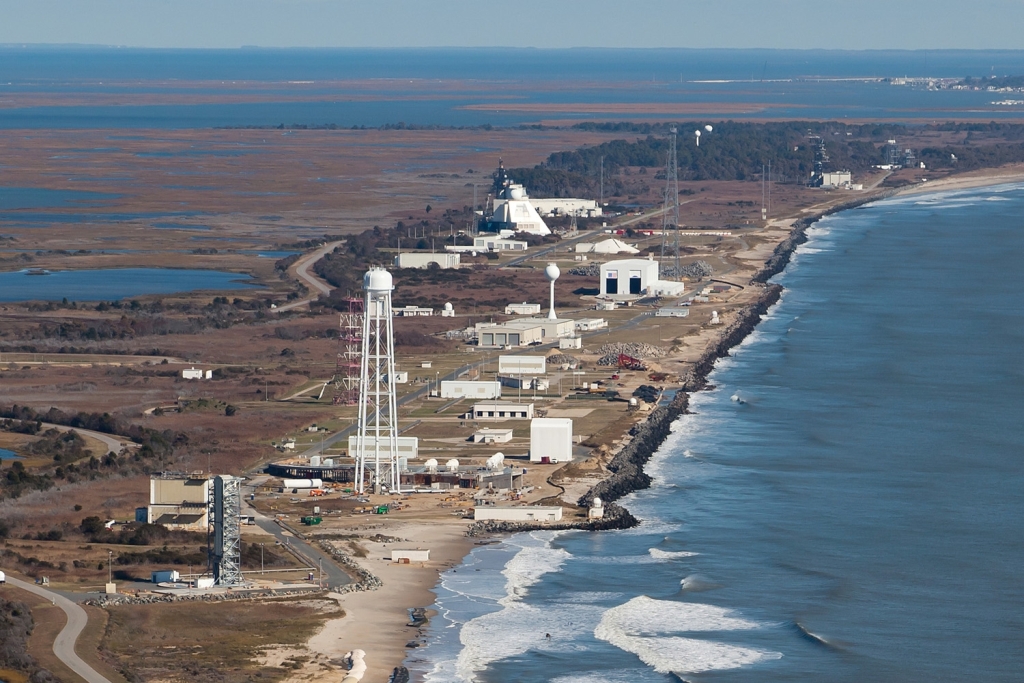|
Orion (US Rocket)
Orion is the designation of a small American sounding rocket. The Orion has a length of 5.60 meters, a diameter of 0.35 m, a launch weight of 400 kg, a launch thrust of 7 kN and a ceiling of 85 kilometers. The Orion, built by NASA Goddard Space Flight Center's Wallops Flight Facility, is also used as an upper stage of sounding rockets, usually paired with a Terrier missile as the first stage. Incidents A lightning storm over the Wallops launch pad on 9 June 1987 ignited a NASA Orion rocket and 2 other sounding rockets. The Orion flew horizontally about 300 feet into the ocean. The sounding rockets rose to around 15,000 feet altitude, then fell about 2 miles from the launch pad. No persons were hurt in the incident.Patricia Tanner, ''Update'', Air & Space/Smithsonian ''Air & Space/Smithsonian'' is a quarterly magazine published by the National Air and Space Museum The National Air and Space Museum of the Smithsonian Institution, also called the Air and Space Muse ... [...More Info...] [...Related Items...] OR: [Wikipedia] [Google] [Baidu] |
Sounding Rocket
A sounding rocket or rocketsonde, sometimes called a research rocket or a suborbital rocket, is an instrument-carrying rocket designed to take measurements and perform scientific experiments during its sub-orbital flight. The rockets are used to launch instruments from 48 to 145 km (30 to 90 miles) above the surface of the Earth, the altitude generally between weather balloons and satellites; the maximum altitude for balloons is about 40 km (25 miles) and the minimum for satellites is approximately 121 km (75 miles). Certain sounding rockets have an apogee between 1,000 and 1,500 km (620 and 930 miles), such as the Black Brant X and XII, which is the maximum apogee of their class. Sounding rockets often use military surplus rocket motors. NASA routinely flies the Terrier Mk 70 boosted Improved Orion, lifting 270–450-kg (600–1,000-pound) payloads into the exoatmospheric region between 97 and 201 km (60 and 125 miles). Etymology The origin of the term ... [...More Info...] [...Related Items...] OR: [Wikipedia] [Google] [Baidu] |
NASA Goddard Space Flight Center
The Goddard Space Flight Center (GSFC) is a major NASA space research laboratory located approximately northeast of Washington, D.C. in Greenbelt, Maryland, United States. Established on May 1, 1959 as NASA's first space flight center, GSFC employs approximately 10,000 civil servants and contractors. It is one of ten major NASA field centers, named in recognition of American rocket propulsion pioneer Robert H. Goddard. GSFC is partially within the former Goddard, Maryland, Goddard census-designated place; it has a Greenbelt, Maryland, Greenbelt mailing address.CENSUS 2000 BLOCK MAP: GODDARD CDP " U.S. Census Bureau. Retrieved on September 1, 2018. 1990 Census map of Prince George's County [...More Info...] [...Related Items...] OR: [Wikipedia] [Google] [Baidu] |
Wallops Flight Facility
Wallops Flight Facility (WFF) is a rocket launch site on Wallops Island on the Eastern Shore of Virginia, United States, just east of the Delmarva Peninsula and approximately north-northeast of Norfolk. The facility is operated by the Goddard Space Flight Center in Greenbelt, Maryland, and primarily serves to support science and exploration missions for NASA and other Federal agencies. WFF includes an extensively instrumented range to support launches of more than a dozen types of sounding rockets; small expendable suborbital and orbital rockets; high-altitude balloon flights carrying scientific instruments for atmospheric and astronomical research; and, using its Research Airport, flight tests of aeronautical research aircraft, including unmanned aerial vehicles. There have been over 16,000 launches from the rocket testing range at Wallops since its founding in 1945 in the quest for information on the flight characteristics of airplanes, launch vehicles, and spacecraft, and ... [...More Info...] [...Related Items...] OR: [Wikipedia] [Google] [Baidu] |
RIM-2 Terrier
The Convair RIM-2 Terrier was a two-stage medium-range naval surface-to-air missile (SAM), and was among the earliest surface-to-air missiles to equip United States Navy ships. It underwent significant upgrades while in service, starting with beam-riding guidance with a range at a speed of Mach 1.8, and ending as a semi-active radar homing system with a range of at speeds as high as Mach 3. It was replaced in service by the RIM-67 Standard ER (SM-1ER). Terrier has also been used as a sounding rocket. History The Terrier was a development of the Bumblebee Project, the United States Navy's effort to develop a surface-to-air missile to provide a middle layer of defense against air attack (between carrier fighters and antiaircraft guns). It was test launched from on January 28, 1953, and first deployed operationally on the s, and in the mid-1950s, with ''Canberra'' being the first to achieve operational status June 15, 1956. Its US Navy designation was SAM-N ... [...More Info...] [...Related Items...] OR: [Wikipedia] [Google] [Baidu] |
Air & Space/Smithsonian
''Air & Space/Smithsonian'' is a quarterly magazine published by the National Air and Space Museum in Washington, D.C. ) , image_skyline = , image_caption = Clockwise from top left: the Washington Monument and Lincoln Memorial on the National Mall, United States Capitol, Logan Circle, Jefferson Memorial, White House, Adams Morgan, ..., United States. Its first publication was in April 1986. Articles in the magazine involve topics related to aviation and space travel, historical and current. It also covers military aviation and aeronautical technology. References External links * 1986 establishments in Washington, D.C. Bimonthly magazines published in the United States History magazines published in the United States Aviation magazines Magazines established in 1986 Magazines published in Washington, D.C. Smithsonian Institution publications {{hist-mag-stub ... [...More Info...] [...Related Items...] OR: [Wikipedia] [Google] [Baidu] |

